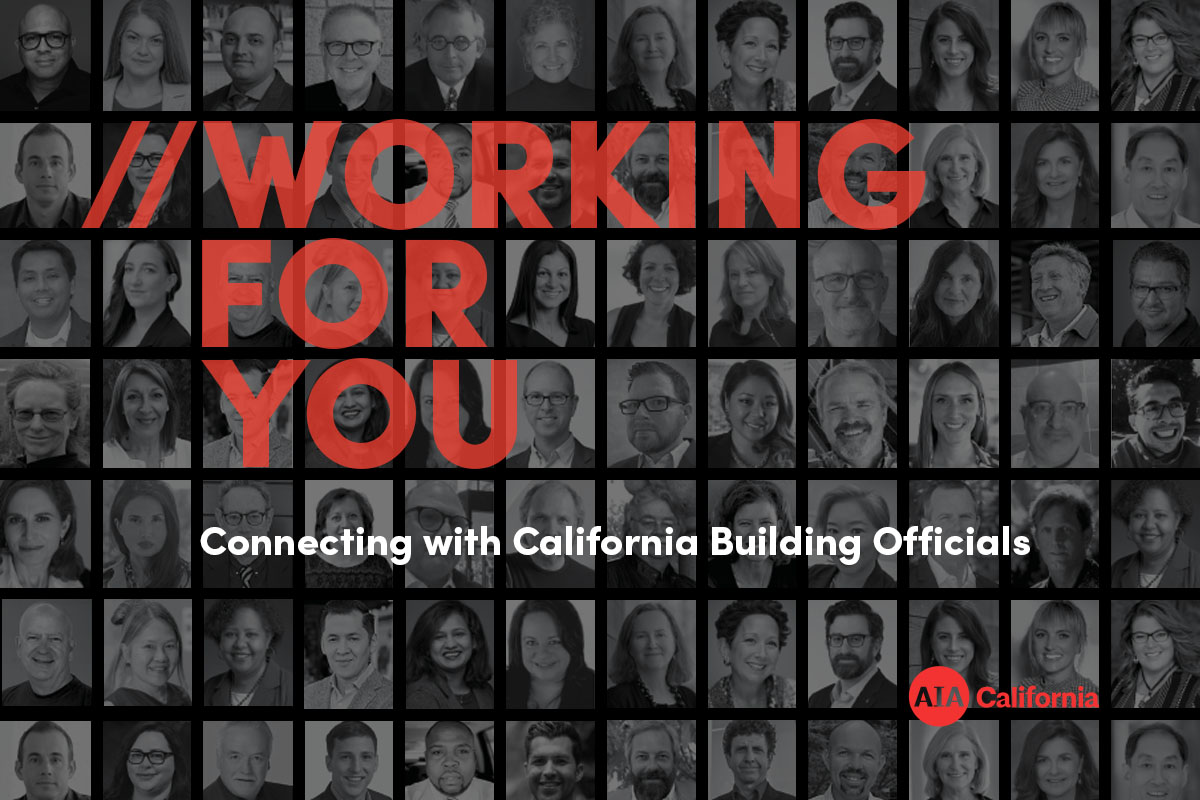
Greetings from the AIA California Office.
Advocating on your behalf is what we do at AIA California, and this week, two of our most critical advocacy representatives, Consultant Michael Malinowski, FAIA, and AIA California Director of Government Relations Scott Terrell attended the California Building Officials (CALBO) Annual Conference.
Yes, I hear your collective groan; Building and Safety Inspectors aren’t the most popular group of individuals interacting with the architectural profession.
How can we make these interactions easier? How can we reduce firm and client money spent on the approval process? How can we better educate building officials across California? And most importantly, how can we lobby for consistent interpretation and inspections?
That’s why we were at the CALBO Annual Meeting.
In particular, Mike and Scott were on hand to connect with officials regarding two critical areas: the nation’s first mandatory embodied carbon measure—lodged in CALGreen—and two new compliance paths in the California Existing Building Code intended to increase housing production by reducing barriers to adaptive reuse. AIA California led the effort on both of these initiatives.
These code changes, which take effect on July 1, have been made within the regulatory environment, and California Building officials will institute them. Thus, Mike and Scott’s trip and lengthy conversations at CALBO were to facilitate a better understanding of compliance paths and deepen an already initiated partnership with CALBO on educational consistency.
While we understand we can’t resolve ongoing pressures for architects obtaining code approvals, AIA California strives through initiatives such as the CALGreen check lists to create clear objective paths to code compliance. These checklists create a single connective pathway used by both architect and building official. (CALBO even recognized and called out the Checklist’s value during their annual meeting earlier this week.)
We know this is just a very small part of your interaction with building code officials, but we’re working to advance codes changes beneficial to architects, our communities, and our planet while striving to make sure officials have the information they need to implement them. We know that’s critical to the work in your office, and one more way AIA California is working for you.
